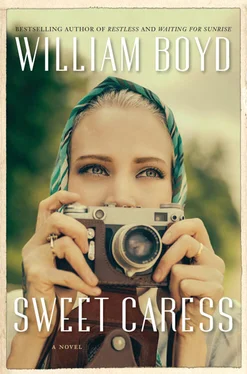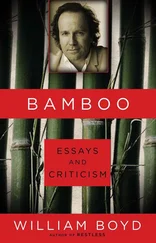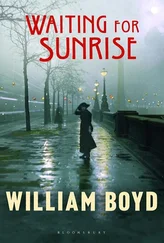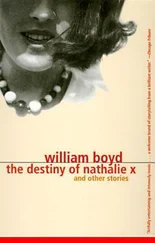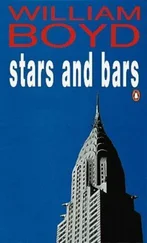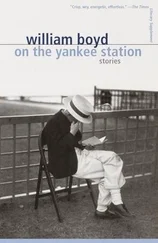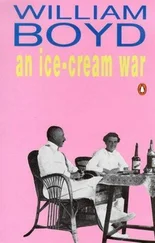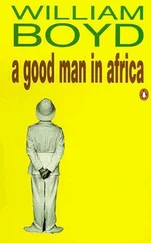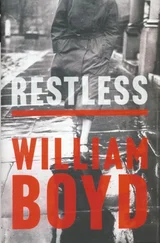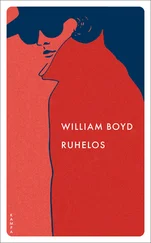‘We are in a bit of trouble,’ he said. ‘A bit. We might have to sell a couple more of the farms.’
I continued with my gentle interrogation and discovered that Sholto had lost nearly £10,000 at baccarat that night in the Mayfair casino. There had been no celebrity actor present. It was casino practice routinely to alert the press when a big loser was leaving the premises — the unwelcome publicity, the blinded stare faced with popping flashbulbs, had the effect of reminding everyone — particularly the loser — of the loser’s fiscal responsibilities.
Worse was to come. My questioning opened the door to Sholto’s occasional gambling binges. He tried to confine them to his trips to London, but further enquiries unearthed a bookkeeper in Glasgow who held his notes for his flutters on the horses. Sholto owed him close to £8,000. These were vast sums, by any standard.
My worst suspicions were confirmed when I went into Oban, to Naismith & McFee. I had my chequebook at the ready but never expected a line of credit that had recently crossed the £1,000 mark. ‘We would appreciate an early settlement, Lady Farr,’ Mr Naismith himself requested in his office, his polite smile and inclined head failing to disguise his anxiety. I wrote him a cheque and the next day went to see our banker in Edinburgh, Mr Fairbairn Dodd, managing director of Carntyne Petre & Co.
Fairbairn Dodd was a plump, smiling, clever man with perfectly white hair, a fact that added to his spurious aura of disinterested benignity. He was extremely polite, ordered me a pot of tea, and outlined the details of Sholto’s stewardship of the House of Farr estates since he had inherited them on the death of his father in 1929. There were only two farms left, it turned out, providing an income of £800 a year. The land remaining was still several thousand acres but of a less valuable non-agricultural nature — fen, moor and mountain. There were still the few cottages in the Oban — Mallaig area but they brought in insignificant revenue. The Glasgow and Edinburgh properties had almost all been sold and the mews house in South Kensington now had a second mortgage. The current overdraft with Carntyne Petre was running at £23,000.
‘We’re effectively bankrupt,’ I said.
‘No. You have the House of Farr and its contents and several thousand acres of Scottish countryside. These are considerable assets.’
‘What should we do, Mr Dodd?’
‘First of all, Lord Farr has to stop throwing money away with such promiscuous abandon. Then, perhaps, sell the Raeburn portraits, and the tenth baron’s porcelain collection. Sell the house in London.’ He smiled. ‘We can arrange all this for you, very discreetly. Let the grouse moor to a wealthy sporting Englishman. August and September — it’s a fifteen-hundred-brace moor. A real asset.’ He thought. ‘And surely Lord Farr could be a further asset to the boardrooms of certain companies. . Defence, whisky, tourism. Let me look into that. Everything’s changing, Lady Farr. Your husband has a name and a reputation he can exploit.’
‘Get a job, in other words.’
‘It’s an option. Worth considering.’
I went back to Farr and laid out the facts to Sholto as Fairbairn Dodd had laid them out to me. Sholto seemed chastened as I outlined the brutal details of his massive indebtedness.
‘You have to stop drinking, darling.’
‘I’ll cut down, I promise.’
And then, a month later, he had a heart attack. Again it was in London, in the entrance hall of his club, Brydges. It wasn’t serious and he was out of hospital within a week, armed with many bottles of pills to take. I went with him to see Jock Edie and refused to leave the room when Sholto asked me to.
Jock had copies of Sholto’s X-rays.
‘Well, the bad news is that you have to stop drinking and smoking, now. Forever,’ Jock said, amiably. ‘And the good news is that if you do as you’re told you should see your daughters married and you may even dandle your grandchildren on your knee.’
‘That’s the good news, is it?’ Sholto said, his voice small and monotone. ‘I suppose you think I should see a trick-cyclist, as well.’
‘Only if you want to. You have to want psychiatric help if it’s going to be of any use.’
‘We can certainly think about that,’ I said, trying to be positive.
*
THE BARRANDALE JOURNAL 1977
End of September on Barrandale equals end of midges. These little blurry clouds of stinging flies are the bane of Scottish summers and, to celebrate their absence, I took Flam out for a walk and wasn’t bitten once. We walked round the headland on the western edge of the bay and I was surprised to see a Land Rover parked by the ruined cottage. There was a young man taking photographs and measuring the rooms with a multi-yard tape. He was a surveyor, he said.
‘Somebody’s interested in buying it,’ he confided. ‘Wants to put a new roof on, do the whole place up.’
I asked him who it was but he wouldn’t tell me.
I walked home, my head full of thoughts, of suppositions. This new person would be my closest neighbour but would be over half a mile away and entirely out of sight. I could hardly complain. But, I thought, I could certainly find out who it was with a bit of judicious asking around. It was hard to keep a secret on Barrandale.
*
Sholto became physically transformed after he left hospital — thin, diminished — and he looked unwell, his face unnaturally flushed, his fine straight hair losing its lustre, becoming dry and brittle. It was if the memento mori he had received — the attack of his heart — had surprised him profoundly. Sholto Farr, the invincible man, baron, war hero, commando, had been brought low.
Sholto followed doctor’s orders — but on his terms. He cut down — only two packs of cigarettes a day, not three. He only drank whisky in the evening, contenting himself with a glass of beer at lunch. Or so he said. I kept finding bottles here and there, secreted about the house. I found his hip flask half full of gin in his fishing jacket. He stashed bottles in the walled garden and I would watch him from the sitting room unearthing them and having a few covert swigs and then pretend to inspect the roses.
But we became solvent, after a fashion. We quietly sold the Raeburns to the Scottish National Gallery — double portraits of the 7th Baron Farr and of his wife, Lady Zepherina — and the porcelain collection of Sholto’s grandfather. The South Kensington mews went, and a shooting syndicate rented the Beinn Lurig grouse moor for three years. Our overdraft with Carntyne Petre & Co. was reduced to £2,000. Sholto joined the board of Glen Fleshan Distilleries Ltd for a generous annual stipend. A trust fund continued to pay for the girls’ school fees and we managed, amazingly, to live approximately in the style we were accustomed to on our remaining rents and the odd dividend from our stocks and shares.
However, slowly but surely, the house began to fall apart. The staff was reduced to the Dalmires. I started doing more housework. We let one gamekeeper and the forester go and rented their cottages to tourists in the summer.
And as the house grew dingier and damper, and other pieces of furniture were sold at auction to pay the bills (we made an astonishing £1,000 from a lacquered Chinese cabinet), so Sholto seemed to decline in tandem. We had screaming rows — or rather I screamed at him as he sat in his armchair, a cigarette in one hand, a glass of whisky in the other, his head bowed, a prematurely old man being castigated by his harridan wife.
I remember I was hoovering our bedroom when I heard a gunshot — inside the house, down below on the main floor. As I raced downstairs I heard more blasts — a shotgun — coming from Sholto’s gunroom. My terrified panic — suicide — turned to irritation: Sholto shooting at rabbits on the lawn from the window. I flung open the door and saw him sitting behind his desk taking aim at something high on the cornice. He fired and I reeled away as a blast of powder erupted on the ceiling.
Читать дальше
